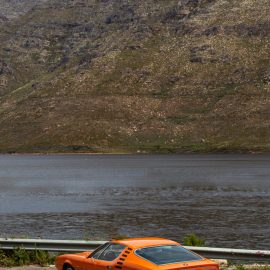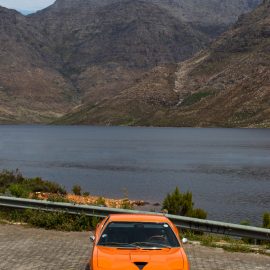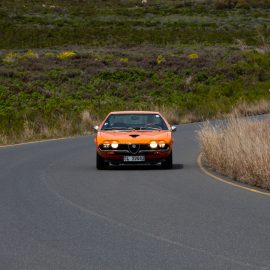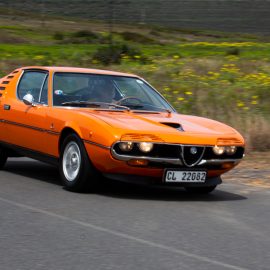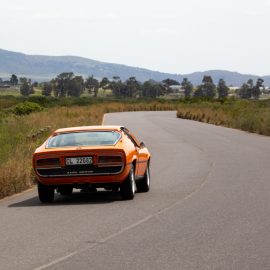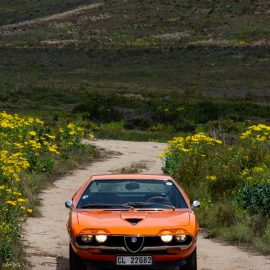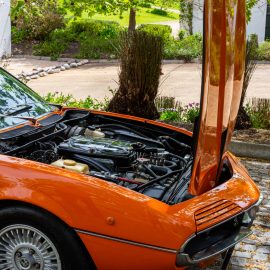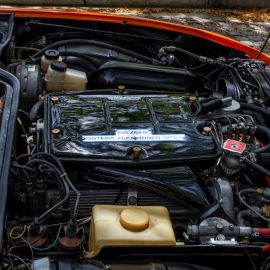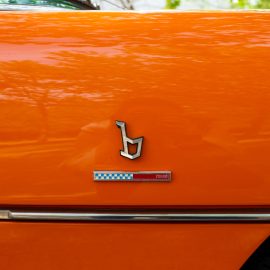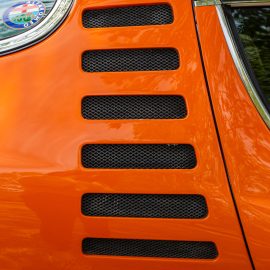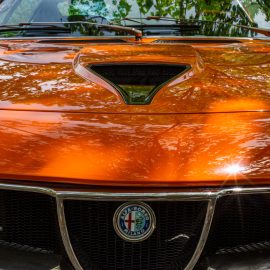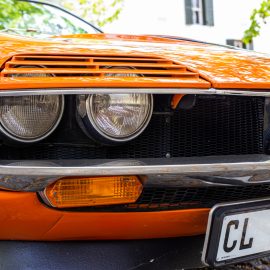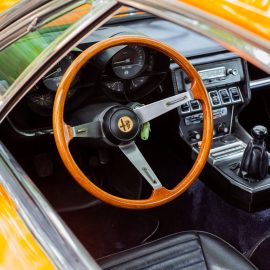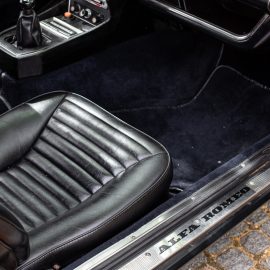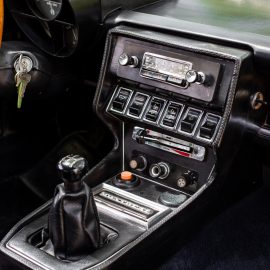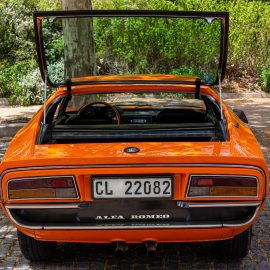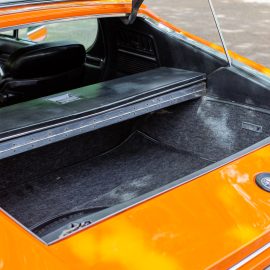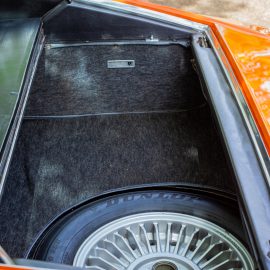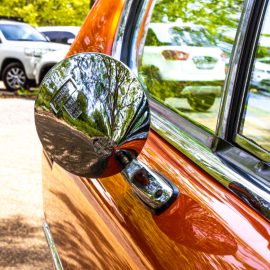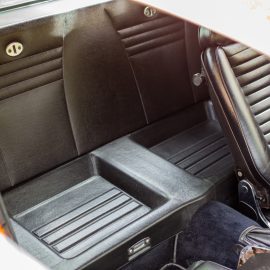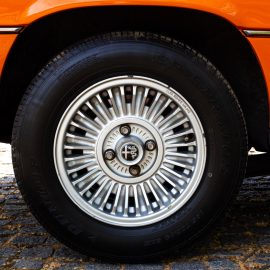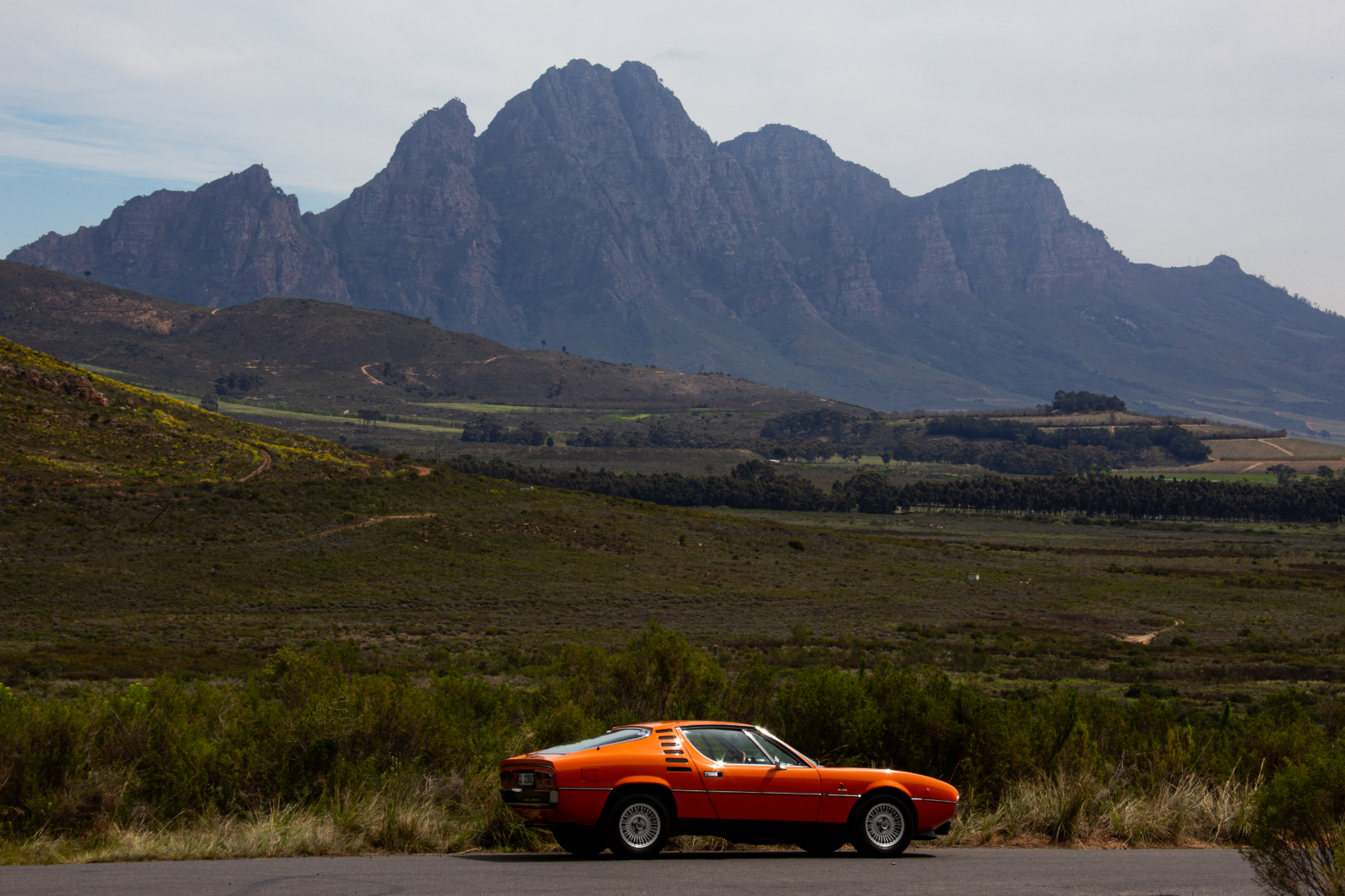
29 Oct Anniversary Celebration: Alfa Romeo Montreal
A regular feature covering vehicles in the FMM collection that are celebrating an anniversary during 2022. This month Mike Monk enthuses over a particular favourite with a sorting heart…
I freely admit that Alfa Romeos have long been a particular favourite brand, and one of the highlights of my association with them occurred back in 1975 when I was an editor on CAR magazine. I was running a monthly feature called Quick Cars and was invited by local Alfa agent Norman Sachs to drive an Alfa Montreal that he had just bought. The car was originally planned to appear at a local show, but due to political problems in Italy arrived two months late (!), and Norman was, er, ‘quick’ to buy the car. From its ‘eyebrowed’ headlights to the Kamm tail, it simply captivated me, and today, whenever I see FMM’s 1972 Montreal, it brings back that special moment.
The model’s origins go back 55 years to the 1967 Montreal Expo in Canada for which Alfa Romeo was asked to present a car that interpreted “man’s highest aspiration for automobiles”. Turin based Carrozzeria Bertone was given the task of creating the concept based on the Alfa Series 105 running gear, and renowned designer Marcello Gandini was assigned to the task. Taking ideas from the Giulia Sprint GT, Gandini came up with a design not too dissimilar to the Lamborghini Miura, which he had also designed. A full-size model was made and from this two prototypes were built that appeared at the Expo from April to October 1967 and were the stars of the show, a reaction Alfa simply could not ignore.
While the prototypes were fitted with Alfa’s legendary 1600c twin-cam engine, Alfa’s technicians were looking at fitting the 90-deg V8 engine from the Alfa 33 Stradale sports racing car into the striking coupé. The installation required some bodywork changes to accommodate the bigger motor, which was increased in capacity from 1995cc to 2593cc. The quad-cam engine featured electronic ignition, Spica mechanical fuel injection and dry sump lubrication, and with a 9,3:1 compression ratio delivered an even 200 hp (149 kW) at 6 500 r/min and 235 N.m of torque at 4 750 r/min..While a six-speed gearbox was used for the two-litre 33, the Montreal was fitted with a five-speed ZF transmission.
The running gear comprised coil-spring/wishbone front suspension with an anti-roll bar, a live rear axle located by radius arms and an anti-roll bar, telescopic dampers, rack-and-pinion steering, servo-assisted four-wheel ventilated disc brakes and 6½Jx14-inch Campagnolo cast alloy road wheels. The handbrake works on separate drums.
In front of the driver there is a comprehensive set of gauges and warning lights housed in two circular dials. The speedo reads to 260 km/h and the tachometer to 9 000 r/min, red-lined at 6 500. Tow column stalks on the left-hand side operate the indicators and headlamps, the latter twisted to release the vacuum-operated eyebrows over the quad headlights. A row of rocker switches on the hangdown centre console operate functions including the ventilation system, windows and wipers. Oh, a period radio is also set into the console.
The Montreal appeared at the Salon de Geneva in March 1970 and went on sale the following year. FMM’s brilliant orange-coloured example was made in 1972 and was part of the Roderick Ketterer Alfa collection purchased by FMM in 2008. Although deemed a 2+2, the back seats are in reality a token gesture and are useful only for holding luggage. A lever in the B-pillar releases the large, square rear window that is supported on struts and gives access to the boot space.
The front seats are adjustable only for rake, and with the driver’s seat pushed right back, comfortably accommodates my long-legged frame. Aided by narrow A-pillars, the view over the wide bonnet is practically uninterrupted. The engine responds quickly rather than rapidly, the notchy gearshift having first below reverse on the left of the gate. While heavy at parking speeds, the unassisted steering is quite lively when on the move and is best held lightly rather than gripped firmly to not spoil the driving pleasure.
Engine tone is quite sophisticated – sporty yet relaxed, perhaps as a result of being front-mounted rather than amidships. With a 0-100 km/h time of just over 10 seconds, it is not supercar fast – and does not pretend to be. The Alfa Romeo Montreal more than adequately defines a Grand Tourer, and with only 3 925 examples – all left-hand drive – built between 1971 and 1977. The Montreal may not have been as exotic as the mid-engined Miura, but it was – and 50 years later – still is very special.
Cuore Sportivo…
FMM’s 1972 Alfa Romeo Montreal is currently on view in Hall D.




